The ruined carpet is hauled to a disposal facility. ($55.00)
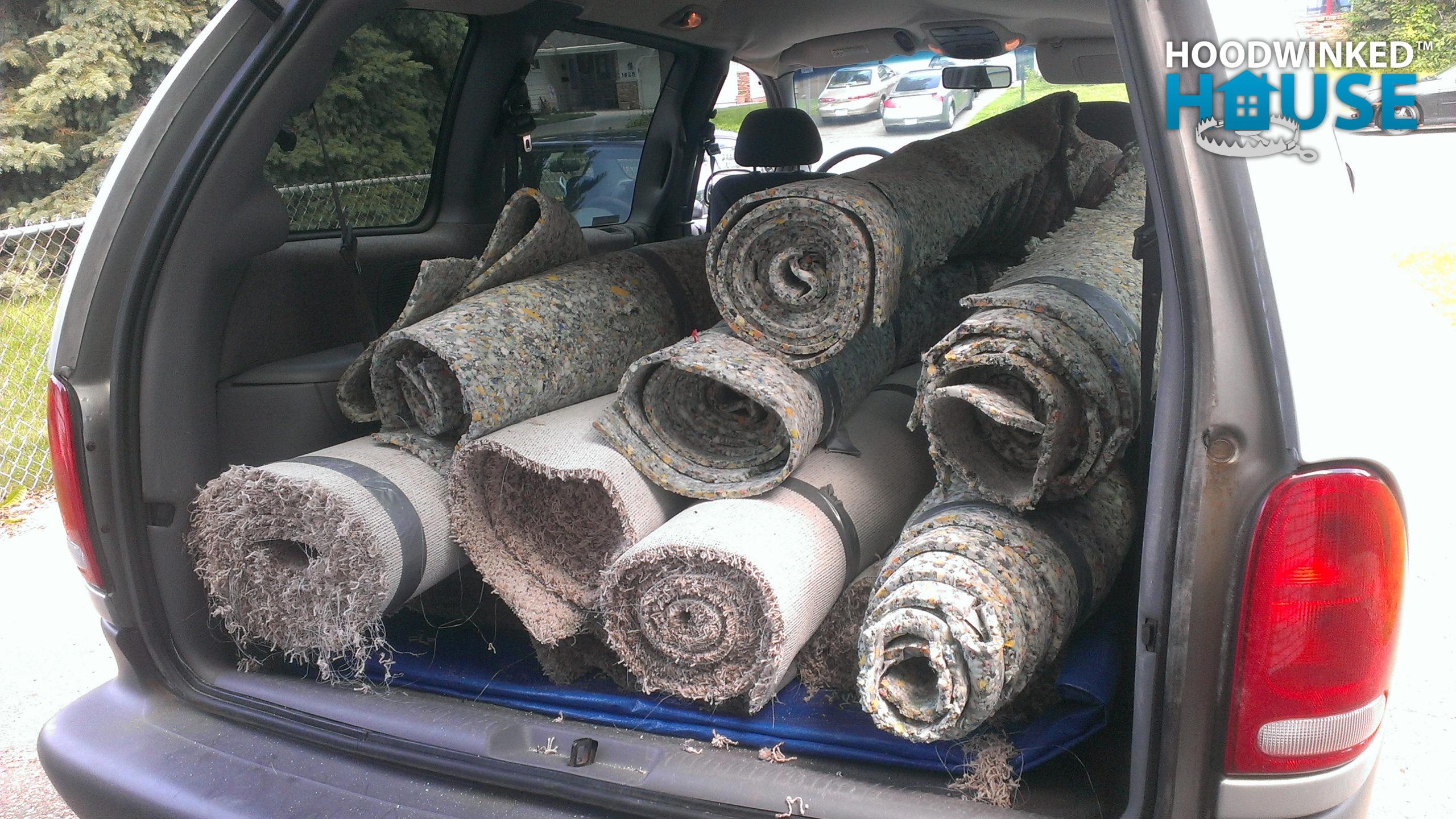
The ruined carpet is hauled to a disposal facility. ($55.00)

The roof is still badly damaged from winter’s ice dams. This same area of the roof is missing some flashing. This allowed the ice to open a hole in the siding which lets daylight (and rain water) into the attic and through the bedroom ceiling.
It appears that the flippers partially dealt with ice dams by using heat tape installed on a dedicated circuit. This winter past winter I learned that the circuit works, but the heat tape itself is shot. The ongoing damage to the bedroom soffit during summer months leads me to believe ice dams are only part of my problem.
Today, carpenters begin repairing the damaged roof.
This is only a part of the solution to this ongoing problem. Additionally, the eves will need to be cleared of any insulation that may have fallen into the soffit, and new heat tape will need to be installed.
Repair work continues on the roof. Over the front door, one of the fascia boards was completely rotten, and has been removed for replacement.
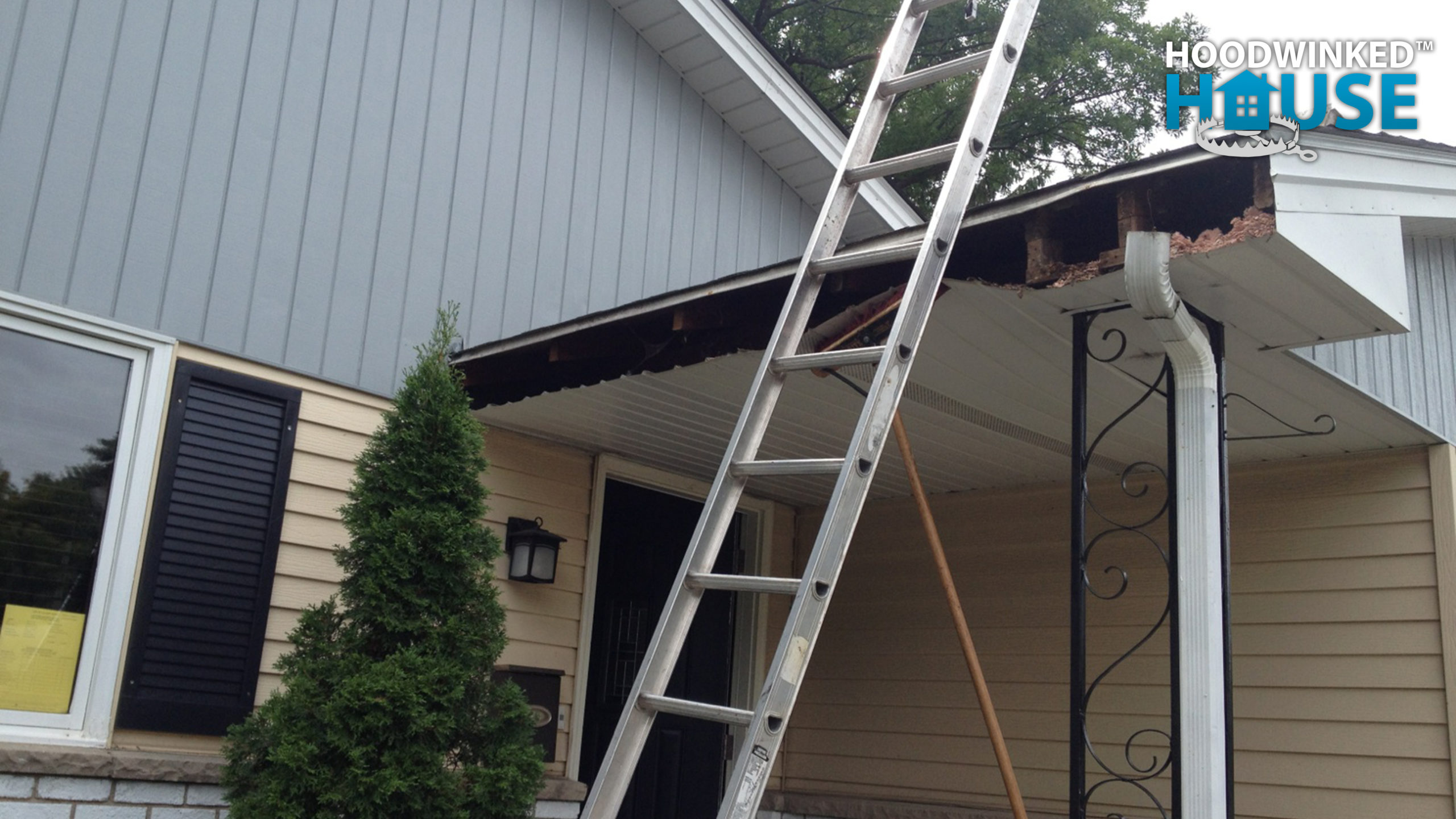
I continue demolishing the damaged bedroom soffit.
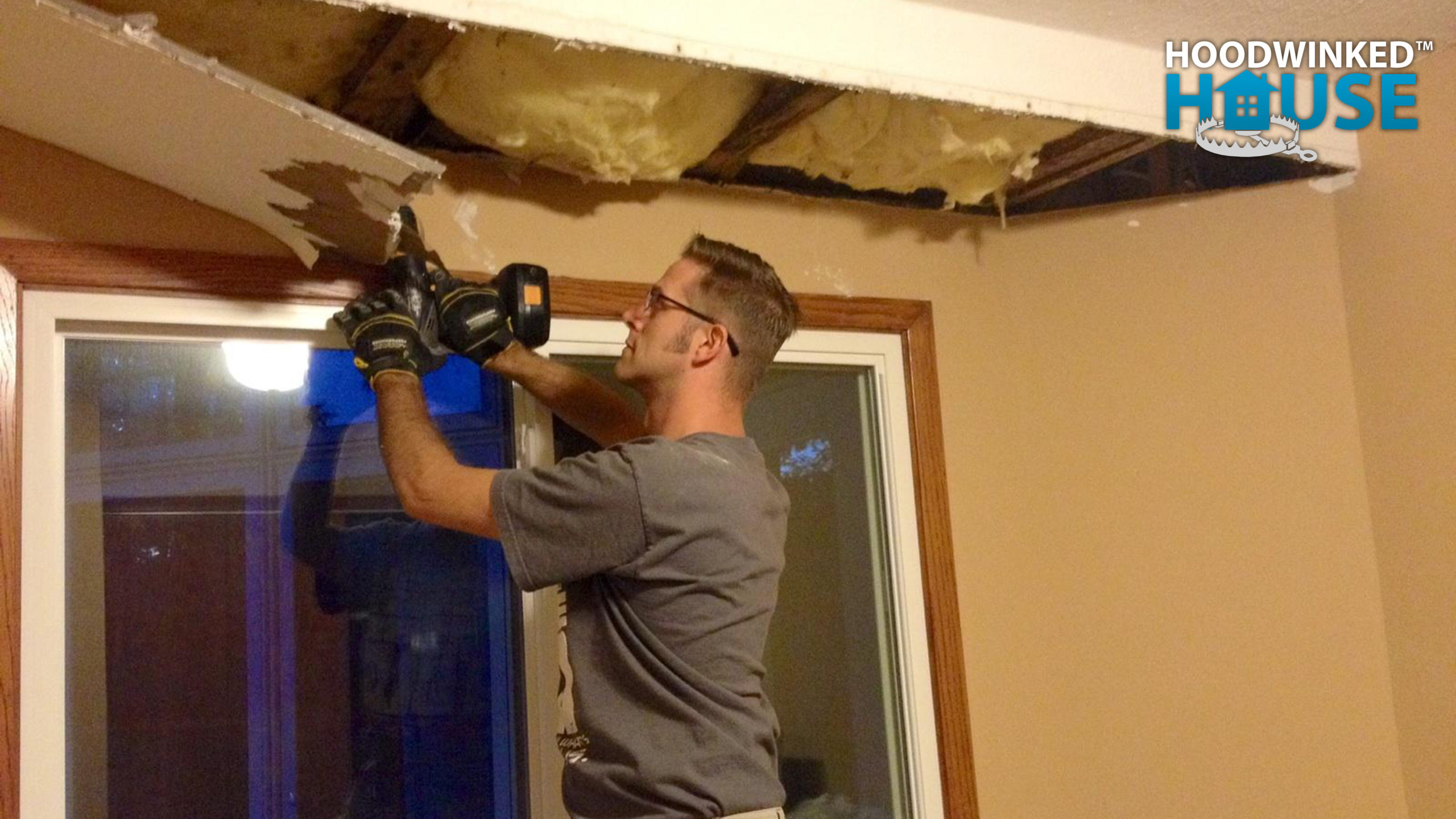
There are two drywall sheets which have been installed with different fasteners, indicating that one of them was installed as part of a separate project. In this photo, the older drywall and insulation is on the left, and the newer drywall is on the right.

The larger pieces of newer drywall show evidence of this past year’s water damage.
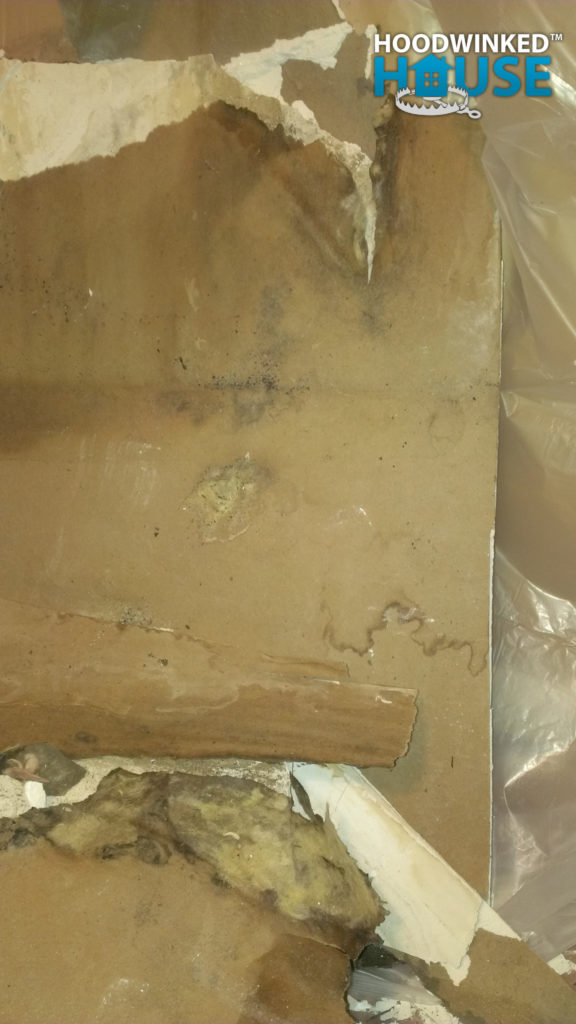
When I remove the insulation, I discover that a large portion of the roof sheathing has been replaced with overlapping older, damaged sheathing from previous ice dams. Portions of the original sheathing are rotted and caved-in, with its original shingles still visible from the underside.
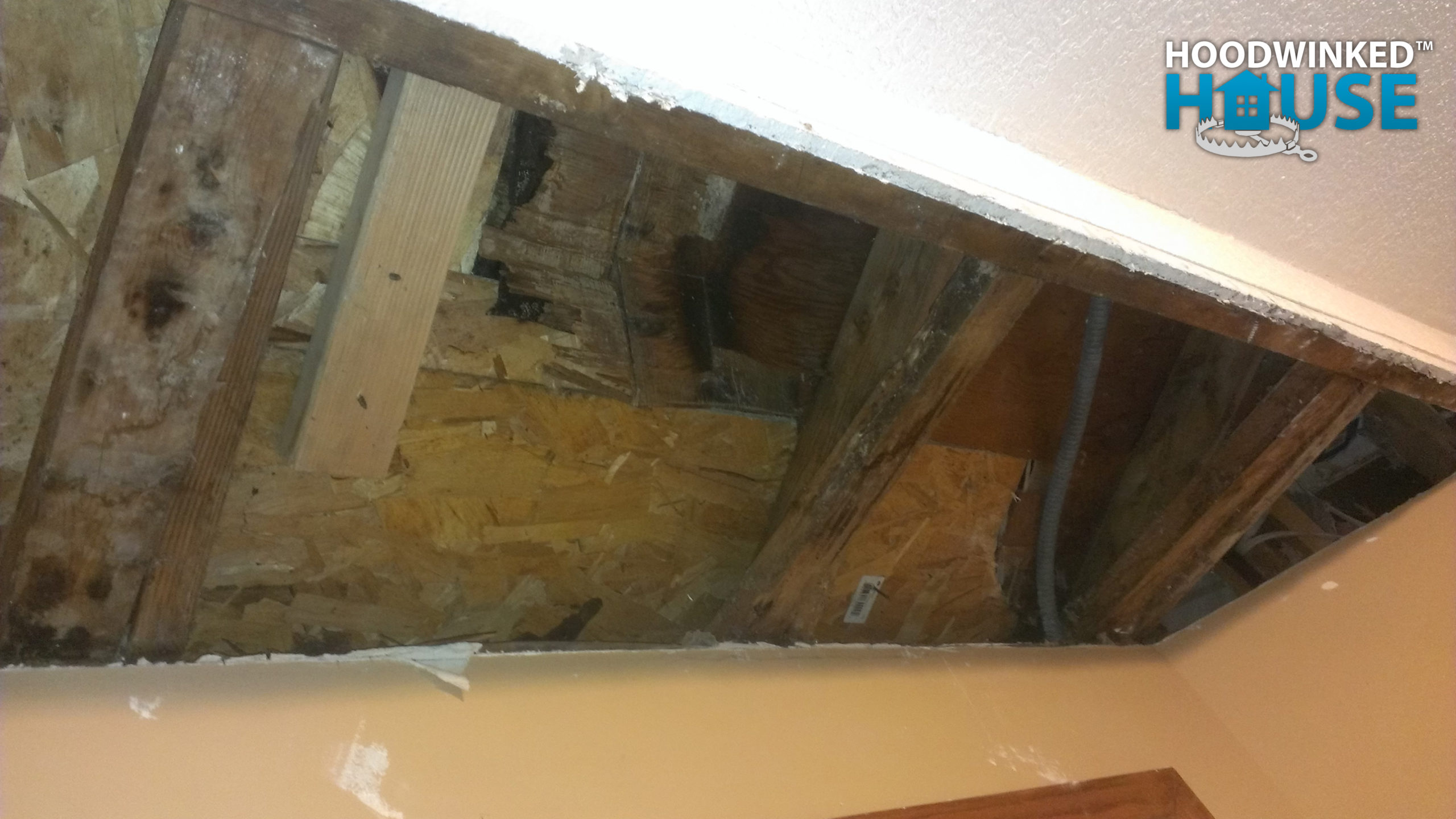
This date stamp on the new sheathing proves that this was recent work, completed shortly before the home went on the market in late 2012, and only a few months before I bought it. No permit was ever pulled for this work. This shoddy roofing project is likely the source of the shingles we’ve found buried throughout the back yard.

I continue work on the attic rat runs. Despite the cooler weather, the attic is still sweltering hot when wearing long sleeves, a dust mask, and other protective gear.
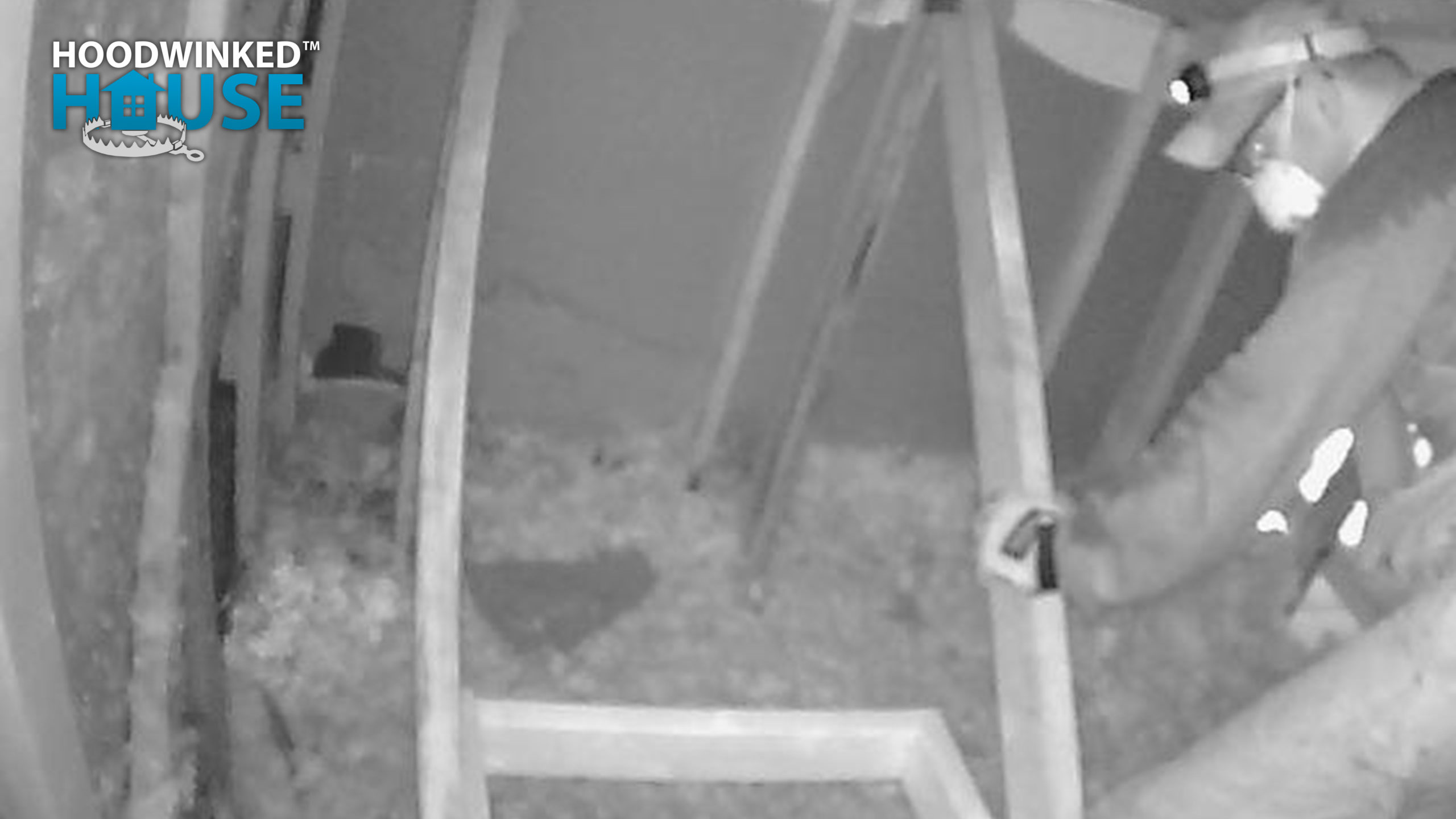
I contact the same roofer who repaired damage from the ice dams for advice on the shoddy sheathing. While the flipper’s work is certainly not done properly, the roofer is convinced that the new flashing, tarpaper, and ice shield have made the roof watertight. Recent rains have proved him correct, and the bedroom is staying dry.